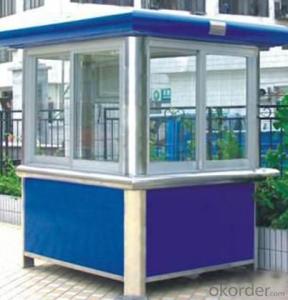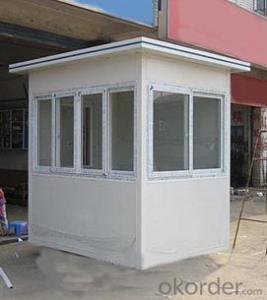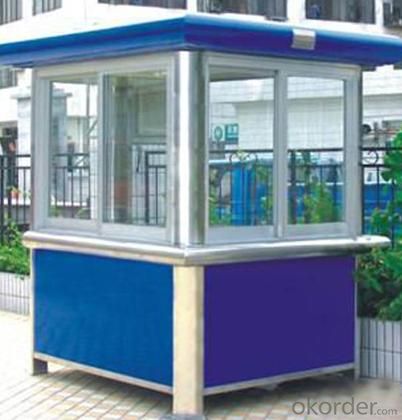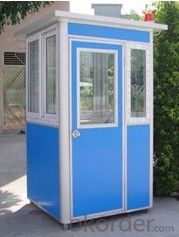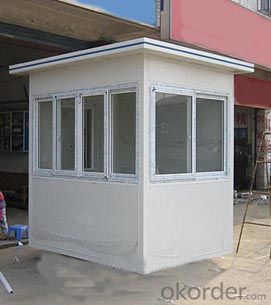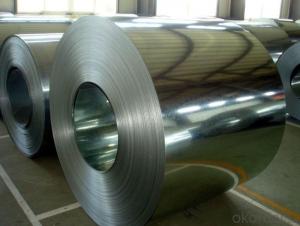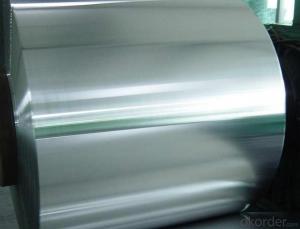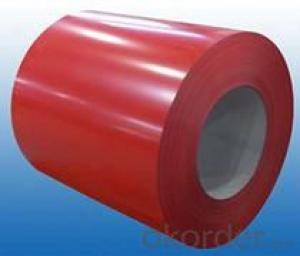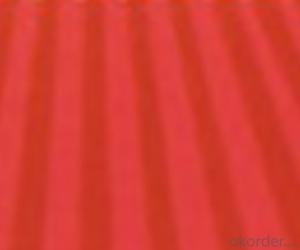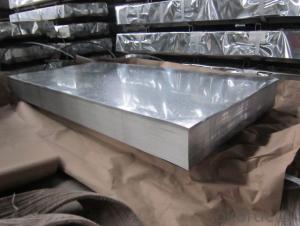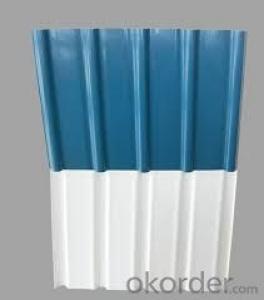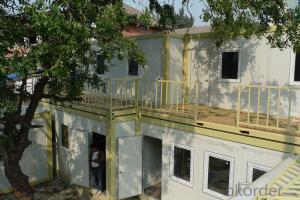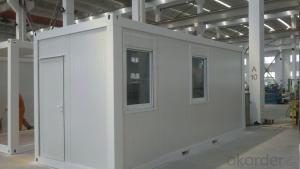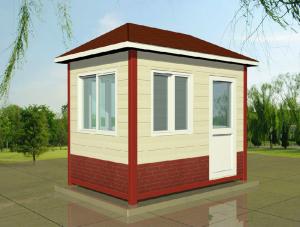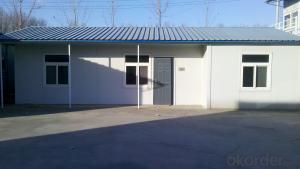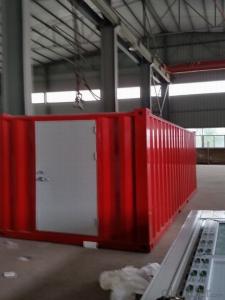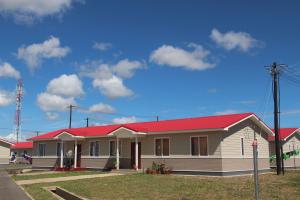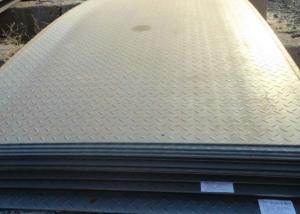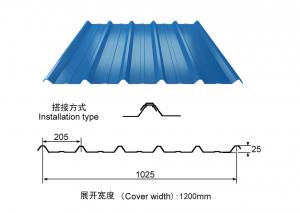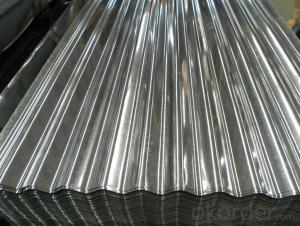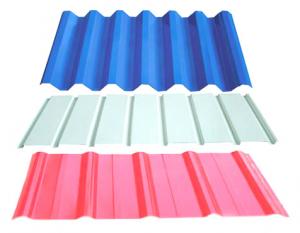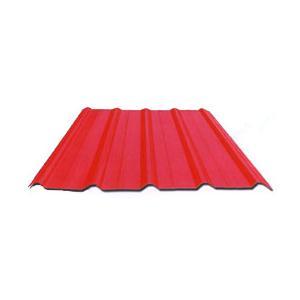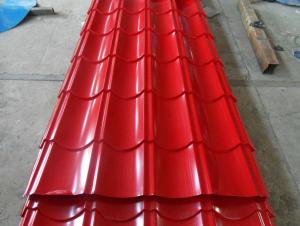Best Quality Prefabricated Movable Guard House
- Loading Port:
- Tianjin
- Payment Terms:
- TT or LC
- Min Order Qty:
- 6 set
- Supply Capability:
- 2000 set/month
OKorder Service Pledge
OKorder Financial Service
You Might Also Like
Introduction
Movable Guard House is pre-fabricated and easy to instal. It can be applicated in many conditions.
Specifications
guard house
1.Flexible Compound
2.Quick Installation
3.Low cost with Good insulation
4.Easy transportation
Packaging & Delivery
Packaging Details: According to client's requirement
Delivery Detail: Depend on the quantities
Products feature:
1. Fast installation within hours.
2. Easy movable by trucks.
3. Improved sandwich roof and wall for best insulation.
4. All electrical wires are installed in factory in advance.
5. We provide different kinds of models to meet all customers demand.
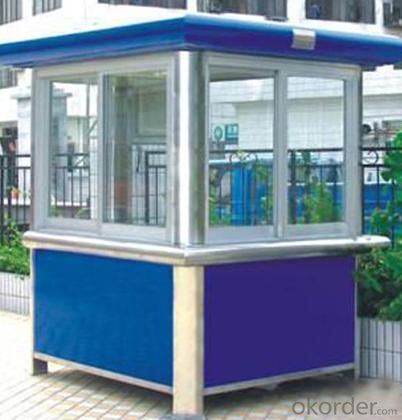
- Q: What is the average cost of stainless steel sheets?
- Various factors, such as the grade, thickness, size, and supplier, contribute to the fluctuating average cost of stainless steel sheets. Prices for these sheets typically span from $30 to $300 per sheet. Lower-grade options tend to be budget-friendly, whereas higher-grade varieties can be pricier. Moreover, thicker sheets command a higher price due to the increased material used. Considering these elements and exploring multiple options is crucial to finding the most suitable price and quality for your individual requirements.
- Q: How are steel sheets coated for corrosion resistance?
- Steel sheets are commonly coated for corrosion resistance using a process called galvanization. Galvanization involves applying a layer of zinc to the surface of the steel sheet. This can be done through either hot-dip galvanization or electro-galvanization. In hot-dip galvanization, the steel sheet is immersed in a bath of molten zinc, which adheres to the surface of the steel through a metallurgical reaction. The zinc coating forms a protective barrier that prevents moisture and oxygen from reaching the steel, thus inhibiting corrosion. Electro-galvanization, on the other hand, involves passing an electric current through the steel sheet while it is immersed in a zinc electrolyte solution. The electric current causes the zinc ions in the solution to be attracted to the steel surface, forming a thin layer of zinc coating. This method is typically used for thinner steel sheets or when a more precise and controlled coating thickness is required. Both hot-dip galvanization and electro-galvanization provide effective corrosion resistance to steel sheets. The zinc coating acts as a sacrificial layer, meaning that it corrodes first before the steel underneath. This sacrificial protection extends the lifespan of the steel sheet and prevents rust from forming. Additionally, the zinc coating can also provide a decorative finish, making it suitable for both practical and aesthetic purposes. Overall, the process of galvanization is a widely used and effective method for coating steel sheets to enhance their corrosion resistance and durability.
- Q: What are the different grades of steel used for making sheets?
- There are various grades of steel used for making sheets, including low carbon steel, high carbon steel, stainless steel, and galvanized steel.
- Q: What is the maximum temperature that steel sheets can withstand?
- The maximum temperature that steel sheets can withstand depends on the specific grade of steel being used. However, most steel sheets can typically withstand temperatures up to 1,500 degrees Fahrenheit (815 degrees Celsius) without significant deformation or loss of strength.
- Q: Can steel sheets be used for outdoor sculptures or artwork?
- Absolutely, outdoor sculptures or artwork can certainly make use of steel sheets. Steel is known for its exceptional durability and strength, which makes it a perfect choice for outdoor settings where sculptures and artwork might face severe weather conditions. By bending, cutting, and welding steel sheets, artists can fashion them into various remarkable shapes and forms, enabling them to craft distinctive and elaborate designs. Moreover, steel can be painted or coated to shield it from rust and corrosion, ensuring that the artwork will endure for a long time. Numerous renowned outdoor sculptures worldwide are constructed from steel, highlighting its adaptability and appropriateness for outdoor applications.
- Q: How do steel sheets perform in terms of earthquake resistance?
- Steel sheets are highly effective in terms of earthquake resistance due to their high strength and ductility. They are capable of absorbing and dissipating seismic forces, providing structural stability and reducing the risk of collapse during an earthquake. Additionally, steel sheets can be easily reinforced and retrofitted to enhance their earthquake resistance, making them a preferred choice in seismic-prone areas.
- Q: Can steel sheets be used for manufacturing electronics?
- Yes, steel sheets can be used for manufacturing electronics, although they are not commonly used due to their magnetic properties which can interfere with electronic components. Other materials like aluminum or plastic are usually preferred for electronics manufacturing.
- Q: Can the steel sheets be easily engraved or etched?
- Engraving or etching steel sheets is a widely adopted practice across several industries, including automotive, aerospace, and jewelry. It involves employing specialized tools and techniques to craft intricate designs, patterns, or text on the surface of the steel sheets. The hardness and durability of steel make it an ideal material for engraving, as it can withstand the pressure and cutting force necessary for creating detailed engravings. Furthermore, the sleek surface of steel sheets ensures precise and unclouded etching outcomes. Nevertheless, it is crucial to acknowledge that the ease of engraving or etching may vary depending on the specific type and grade of steel employed.
- Q: Are the steel sheets suitable for architectural applications?
- Indeed, architectural applications can certainly make use of steel sheets. Steel, being a versatile material, presents numerous benefits for architectural purposes. It possesses strength, durability, and the ability to withstand harsh weather conditions, thus making it an excellent choice for various architectural elements like roofing, cladding, and facades. Furthermore, steel sheets provide architects with design flexibility, enabling the creation of unique and innovative structures. Moreover, steel is an environmentally sustainable material due to its recyclability and long lifespan, making it an eco-friendly option for architectural applications. All in all, steel sheets serve as a dependable and versatile choice for architects who desire to incorporate structural integrity, aesthetic allure, and sustainability into their designs.
- Q: What is the average weight of a steel sheet per square meter?
- The average weight of a steel sheet per square meter depends on the thickness and type of steel, but it typically ranges from 7.85 to 8.05 kilograms per square meter.
Send your message to us
Best Quality Prefabricated Movable Guard House
- Loading Port:
- Tianjin
- Payment Terms:
- TT or LC
- Min Order Qty:
- 6 set
- Supply Capability:
- 2000 set/month
OKorder Service Pledge
OKorder Financial Service
Similar products
Hot products
Hot Searches
Related keywords
